Cet article est également disponible en: French
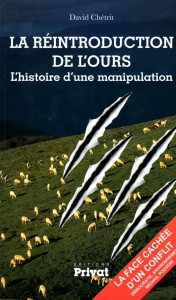 David Chétrit’s new book (La réintroduction de l’ours : l’histoire d’une manipulation, The reintroduction of the bears: a question of undue influence) is sure to become a reference on the subject. It is well worth reading, even though I find some of his ideas debatable. But you don’t have to be in total agreement with him to acknowledge the research which has gone into this well-documented tome.
David Chétrit’s new book (La réintroduction de l’ours : l’histoire d’une manipulation, The reintroduction of the bears: a question of undue influence) is sure to become a reference on the subject. It is well worth reading, even though I find some of his ideas debatable. But you don’t have to be in total agreement with him to acknowledge the research which has gone into this well-documented tome.
Let’s start with the blurb on the back cover: “Going well beyond the anti- and pro-bear debate, this investigative book looks back at the story and the different players.” All of which gives an impression of neutrality. But it’s not like that at all. In reality it is a brief for the prosecution, with the Ministry of the Environment and nature associations as accused. The crime: manipulation of public opinion and disregard of democratic process.
With a dedication to shepherds and headings such as “Organised gang rape” it’s clear that academic detachment won’t be an outstanding feature of this book.
The book looks back at the last forty years of the love-hate relationship between bears and the inhabitants of the Pyrenees, based on documents published by the various actors involved. It is a detailed account, impossible to summarise adequately, so I have simply noted the most interesting passages.
Seeking out the guilty parties: who killed the bears?
As Chétrit says, the inhabitants of the Pyrenees were not alone in hunting bears. The people of the Massif Central, and the Alps also participated. As did Parisians. Everybody hunted bears, for thousands of years. They were everywhere. They have disappeared.
By 1891 they were already in decline. A German zoologist wrote: “The salad days of the bears are over. The species can only survive in those areas that man has not yet invaded… the ever-increasing extent of human presence on the Earth chases the bears away, and will end up destroying them completely, at least in central and southern Europe.” (p.17) At that time there were still 100-150 bears in the Pyrenees, but they were already in danger of extinction.
In fact the Pyrenees are the last bastion of the bears; here they cohabited with the locals, a situation which no longer existed in the rest of France. But today it is the inhabitants of the Pyrenees alone who are blamed for their disappearance.
A bit of history
On the other hand, when Chétrit writes about the human-bear relationship in terms of two animals, he gets carried away and comes to unjustified conclusions.
“The absence or the disappearance of bears in certain European regions is the result of real ecological competition between humans and bears… The readers of these lines are only able to read this book thanks to their ancestors’ persistent struggle, which implied the progressive elimination of predators.” (pp. 19-20)
It is as if there were a bear, a man (let him have a gun to give him a chance) and a sheep in an arena. Whatever happens, the sheep will be eaten. The question is, by whom? But humans and bears are no longer in direct competition at the top of the food chain. Humans went down a different route as long ago as the Neolithic, when they started farming. It hasn’t been a “persistent struggle” for millennia. We no longer need to eliminate bears to survive, even in the Pyrenees.
That’s what the book is like. Mostly very informative, but with some areas which are less coherent.
The first reintroductions
One of the more informative passages is about language: how « l’ours Pyrénéen – the Pyrenean bears » became « l’ours des Pyrénées – the bears in the Pyrenees ». When the French government presented its project to the permanent committee of the Berne Convention, one of the members commented: “The question is whether it is considered important that there are bears in the Pyrenees, or important that Pyrenean bears are safeguarded.” (p. 98) It wasn’t the death of Cannelle (the last truly Pyrenean bear) in 2004 which marked the end of the line, but the deliberate decision to bring in bears from Slovenia. The genetic isolate was no more.
Another interesting passage reproduces American bear expert Anthony Clevenger’s 1995 letter of resignation. He had been recruited three months previously by the Ministry of the Environment.
“The organisation of this project [the reintroductions] does not correspond to the objectives recommended by the LIFE programme. It doesn’t have a scientific purpose; nor does it aim to protect the bear or the environment. Economic and political aspects are more important than scientific ones.”
Chétrit goes on to cite a large number of experts in agreement.
Two male bears mark their presence on a tree in the commune of Melles (7 and 15 April 2012). Firstly Pyros (released on 2 May 1997 in the same commune) and then another male.
Surprising support
The book also notes support for some projects from surprising quarters. For example the upgrading of the road access to the Somport tunnel which was supported by 42 nature organisations (p. 238) despite cutting the territory of the bears living in the central Pyrenees in two. (Incidentally Franska, one of them, was killed in a car accident.)
Just as surprising was Augustin Bonrepaux’s abandonment of his own project to get rid of the new bears. The Ariège MP, known for his fierce opposition to the bears, had managed to convince both houses of Parliament to accept his amendment to a law on hunting. The newcomers were to be forcibly removed. Somehow Dominique Voynet, the Green Party Environment Minister, let it slip through and was forced to introduce a legally doubtful amendment. Against all expectations Bonrepaux withdrew his amendment, thus saving Mme Voynet’s face.
The bears and Maison de Valerie
Maison de Valerie is a big French mail-order firm, so when it agreed to sponsor a bear awareness programme in association with nature organisations, it was quite something: 400 newspaper articles, a competition for children which attracted 100,000 participants, a major exhibition at the Museum of Natural History opened by the French President himself (it went on to be seen by 200,000 visitors), a film, an encyclopaedia… (pp. 64-65). From now on public opinion had to be taken into account.
According to a 2003 survey “88% of French citizens approve of the presence of bears; in the Pyrenees the figure is 86%” (p. 136, quoted from a WWF press release).
Chétrit sees this as manipulation: a strategy of “media pressure to make sure that the bears are a political priority” (p. 63). The essential component in a democratic society – dialogue with the people most affected – never happened (pp. 140 et seq).
More polls
Chétrit says that the nature protection associations “have the means and a permanent staff which knows how to focus its efforts on creating a durable positive image of the bears; they know how to maintain an appearance of legitimacy in the eyes of the general public; [the Pyreneans who are against the reintroductions] are under-organised, ill-coordinated, without either the means or the time… Above all, they are unfamiliar with image management and media strategy.” (p. 210)
However, their media skills have greatly improved since 2003, as can be seen from an opinion poll dating to 2008 (the last reliable poll published). (I haven’t found a reference to this in the book, but I might have missed it.) Here’s the most relevant question:
Question: If the 20 bears currently present in the Pyrenees are insufficient to ensure the survival of the species, are you personally favourable or opposed to the introduction of additional bears in the Pyrenees?
| France as a whole(%) | 6 Pyrenean departments (%) | People living in mountain communes (%) | People living in mountain communes in Ariège, Haute-Garonne, Hautes Pyrénées (%) | |
| total favourable 2008 | 58 | 56 | 39 | 32 |
| figures 2003* or 2005 | 72 (2003) | no comparable figures | 58 (2003 | 62 (2005) |
* at that time there were 15 bears
The survey shows that the protests have indeed influenced public opinion, which by 2008 had become significantly less favourable to reintroductions, particularly in the zone where bears were most in evidence.
At the same time, local government and other organisations started to grasp of how things were developing: “The farmers, shepherding and other local associations, the six chambers of agriculture, the three regional councils, the six departmental councils, the National association for politicians from the mountains and the hunting federations no longer sit on the groupe national Ours [National group for bears, set up to organise local consultations in 2008]”. (p. 229) They left for fear of their presence being taken as proof of constructive discourse between the government and the locals. It was a heavy blow for those who think that any new reintroductions could be acceptable.
So, are the protests a democratic expression of the views of part of the Pyrenean population, or manipulation by determined minority elements, as André Rigoni, mayor of Melles (site of the 1996-7 reintroductions) told me in 2006?
It seems to me that the protestors are trying to influence the government in much the same way as the nature protection associations. Manipulation or not? Everyone has a different opinion.
The numbers game
Curious games, these, centring on the losses and the danger represented by the bears. It’s all relative.
The losses first of all. Chétrit quotes the figures from the ADET (pro-bears) and the Ministry of Agriculture which suggest 150-300 killed sheep by the bears each year. This is contrasted with the 10,000 to 40,000 animals which disappear each year by accident, from illness, attacks, theft, lightning, etc.
But for Chétrit: “the global figures are meaningless… It’s the impact on a single farm that counts… A farmer who loses 20 animals isn’t consoled by the fact that there are 600,000 others in the Pyrenees.” (pp. 215-16)
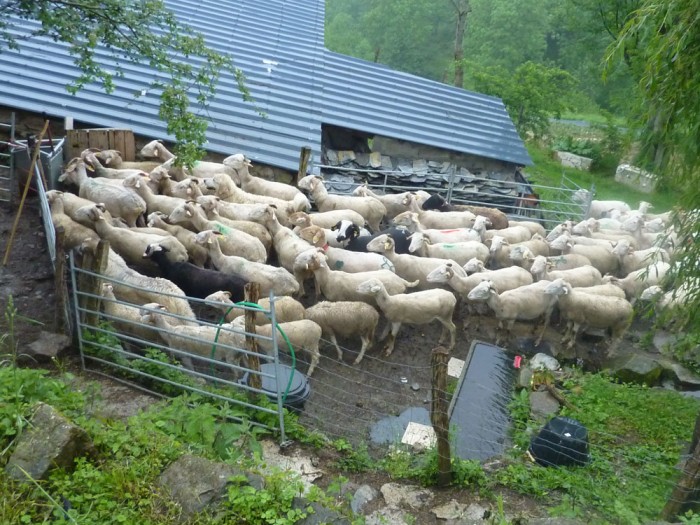
Sheep coming home to the fold at the end of the day (May 2012, before they set off for the summer pastures)
The danger represented by bears can also be interpreted in many ways. Obviously bears are dangerous. Sooner or later someone will die after being attacked by a bear in the Pyrenees. It happens regularly throughout the world. And for Chétrit, that’s the end of the story. Bears are dangerous. He devotes 20 pages to the subject (pp. 184-203).
But it is really a question of how dangerous the bears are. Nobody has been killed by a bear in the Pyrenees for over 150 years. It is true that nowadays you have little chance of even meeting one. But at the end of the 19th century there were still around 150 in the Pyrenees (70 in 1954) (p. 21 for the figures, from Natura 2000), and the mountains were by no means empty of people. Frankly, it is more dangerous to drive a car in the mountains than to walk in bear country.
To summarise, the impact of bears on the human population cannot be measured objectively because the interpretation of the raw figures varies depending on the values of the observer.
The shepherd and the estives (summer pastures)
This is another sensitive subject. Is it reasonable to suggest that shepherds should live in the estive with their flocks?
Chétrit describes the demanding work involved in being a shepherd, the terrible accommodation in the estive and the inadequate grants. He demonstrates the ever-widening gulf between the life of a shepherd on a mountain side and life in a town down below. 35-hour week: impossible. Isolation from everything, even if you have a decent hut, doesn’t suit modern tastes. Getting up before dawn. Working outside in all weathers. Bringing home a pittance. It’s not a career, it’s slavery (p. 165).
Nevertheless Chétrit (like me) has enormous respect for those who choose this way of life. He says that the shepherd’s wealth is “in the earth, the flock and the inalienable liberty he has to make this ancient couple sing harmoniously. The flock and the earth are the two elements which have been transmitted from generation to generation, without interruption.” (p. 42)
It is also true that a shepherd’s life can be greatly improved if there is the political will to do so, as has been seen with the Institut Patrimoniale du Haut-Béarn (IPBH): 129 dairies were brought up to standard between 1994 and 2010, huts in the estive have been improved, helicopters bring supplies, etc. (p. 250)
On the other hand his discourse on why it might be useful for a shepherd to stay in the mountains with his sheep is exclusively orientated towards dealing with the bears, and his analysis of the use of patous (guard dogs) follows the same logic (pp. 174-79). In fact, very few of the 6,000 farms involved will suffer damage caused by bears. Staying with the sheep is useful for other reasons. It enables the shepherd to treat illness and accidents sooner, and to organise the grazing so that the flock benefits from its time in the mountains without over-grazing. The patou is useful in keeping the flock together and keeping stray dogs at bay.
The brown bear is not in danger
Now that the genetic isolation of the Pyrenean population had been compromised and the bears are no longer a separate gene pool, they are no longer interesting from the point of view of biodiversity. At a planetary level the brown bear is not in danger of extinction.
Their perceived significance resides in three principal factors: the image of the species and its long-term connection with the mountains; the “umbrella” effect – if the bears are protected other species automatically benefit; and the international conventions which protect species which really are in danger. (If we can’t cope with wild animals in our own hills how can we ask other people to do so?) All three have a certain value, which Chétrit dismisses.
I’m pessimistic
I’m pessimistic, and sad. Both for the bears and for the shepherds. They are both suffering from the side-effects of modern society. They both have their backs to the wall; they are being crushed by forces which are beyond their control. In lesss than 50 years, I fear, the summer pastures will be empty. No bears, no sheep, no shepherds. But the possible demise of the bears won’t save the shepherds. The average annual income of a sheep farmer is only 10,000 euros (p. 166). The bear may be the straw that broke the camel’s back, but the camel was already overloaded.
And the disappearance of the shepherd won’t save the bears either. Their remaining habitat is too small and there are not enough of them. Even the existence of the National Park since 1967 hasn’t helped, which is hardly surprising as there are currently some two million visitors per year (statistics p. 55). In addition 33,000 vehicles cross the Pyrenees every day, not counting those which use the coastal motorways. Walkers like me are a nuisance. More importantly, there isn’t the level of local acceptance necessary for the 100+ bears necessary to maintain a viable population (see pp. 21-22 for figures on viability). The only politically acceptable way of keeping bears in the Pyrenees would be to be satisfied with the 20 existing ones, adding two or three when the numbers dropped too low. A very artificial kind of management. A zoo!
Let’s be clear about this. I’m neither for nor against the reintroductions. But I do want an honest debate where all the factors are taken into account. In this book, David Chétrit clearly demonstrates the arguments of the anti-bear protestors, and I congratulate him on the results. It is a book which made me think: required reading for all those who are interested in bears.
La réintroduction de l’ours : l’histoire d’une manipulation, by David Chétrit, Éditions Privat, April 2012



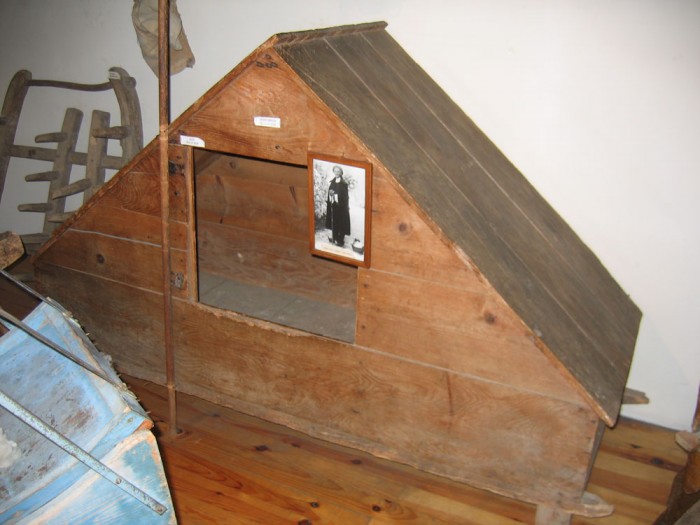

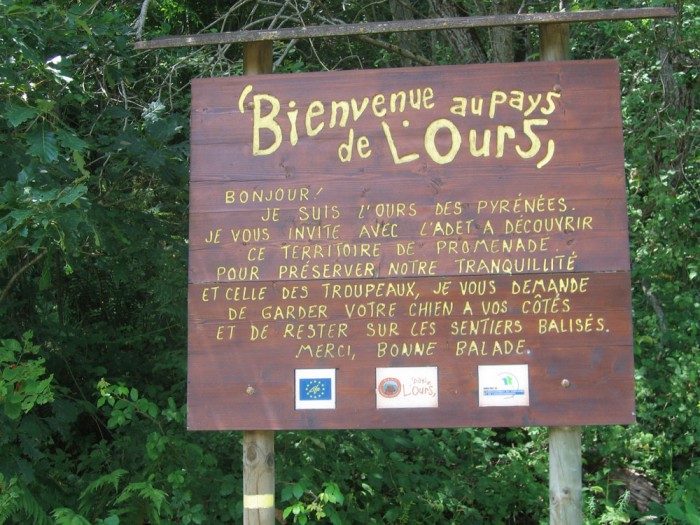
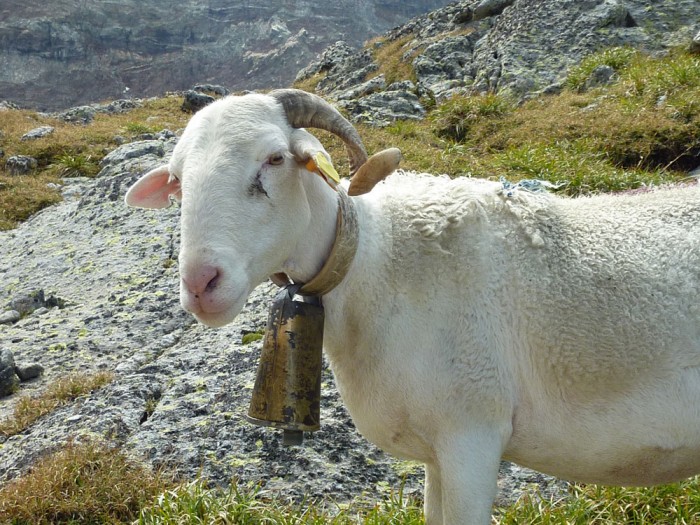
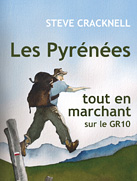


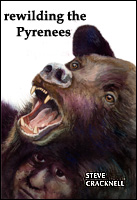



Footprints on the mountains